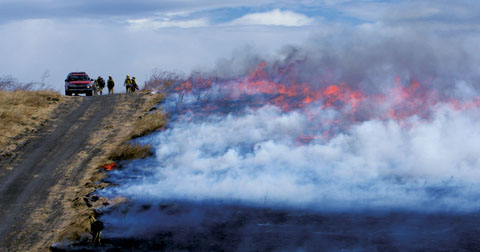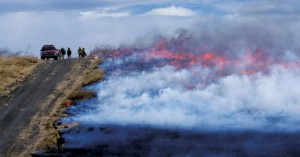An SJSU researcher’s quest to save lives and property by better understanding weather generated by wildfires has taken a huge step forward.
Assistant Professor of Meteorology Craig Clements and two San Francisco State collaborators have developed a novel mobile atmospheric profiling system (CSU-MAPS).
The system will map weather that unfolds in the lowest few hundred meters of the atmosphere, as the smallest interactions between the Earth and the air above it drive local weather patterns and air quality.
“CSU-MAPS will enable, for the first time, a way to measure complex fire winds that are generated by wildfires,” Clements said. “These measurements will be used to develop and test fire behavior models, ultimately leading to improved wildfire prediction and increased fire fighter and community safety.”
Clements will use the new system to study how the atmosphere surrounding a wildfire influences the behavior of the fire and how the fire affects the local atmosphere. Consisting of a telescopic 100-foot tower mounted on a 20-foot trailer, the system can be driven to monitoring positions in safety zones near large wildfire plumes and can be moved if the fire changes course.
CSU-MAPS was acquired with an $800,000 American Recovery and Reinvestment Act grant, jointly awarded by the National Science Foundation to SF State and SJSU. The system is believed to be the only mobile meteorological profiling system of its type in the CSU and the state of California.
In more than 20 classes at multiple campuses, CSU-MAPS will be used to teach tomorrow’s weather forecasters and other students studying oceanography, geography and engineering.
Read a Washington Square story on Clement’s work.#


